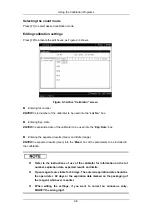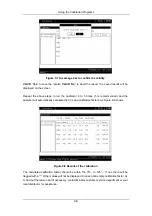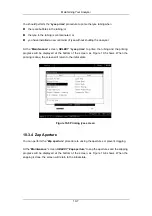
Using the Calibration Programs
9-15
Figure 9-17 Saving changes
CLICK
”
Yes
” to save the new calibration factors;
CLICK
“
No
” to abort the result.
Calibration may be verified by running appropriate commercial controls or by using fresh
whole blood samples that were analyzed on a reliably calibrated hematology analyzer or by
reference methodology. Test the new calibration factors either of the following ways.
Method
one:
1. Prepare 3 to 5 normal fresh blood samples and run each one of them on a reference
analyzer at least 3 consecutive times. Calculate the mean (MEAN 1) and SD (SD 1) of
every sample.
2. Run the same samples on your analyzer for the same number of times and calculate the
mean (MEAN 2). The MEAN 2 should be within MEAN 1 ± 2SD. If any of the samples
fails to reach the criterion, call Mindray customers service department or your local
distributor.
Method
two:
At the “
Count
” screen, run the calibrator at least 5 consecutive times and calculate the
means of the results. The means should be within the expected ranges supplied by the
manufacturer. If not, contact Mindray customer service department or your local distributor.
Other operations
If calibration data (calibration results, CV or new factors) exist
If you press [F2], a dialog box will pop up to warn you, as Figure 9-18 shows. Press [ENTER]
to return to the “
Fresh Blood
”
screen.
Summary of Contents for BC-2800
Page 1: ...BC 2800 Auto Hematology Analyzer Operator s Manual ...
Page 2: ......
Page 12: ......
Page 24: ...Using This Manual 1 12 Figure 1 4 High voltage warning label 7 High Voltage 7 ...
Page 62: ......
Page 91: ...Customizing the Analyzer Software 5 29 Figure 5 46 Saving changes ...
Page 92: ......
Page 170: ...Using the QC Programs 8 14 Figure 8 18 Transmission dialog box ...
Page 196: ......
Page 248: ......
Page 252: ......
Page 266: ......
Page 284: ...Appendices E 10 Hemoglobin Concentration ...
Page 286: ...P N 2800 20 28795 2 0 ...






























